Project: Hunter’s Dreams
The Pitch: It’s a 4th Edition D&D Setting/Modbook which is about playing Bloodborne and Castlevania style gothic horror hunters. Combat is not about crawling through dungeons and parselling out careful resources, but instead about short tactical fights of 2-3 sequences of fights in a row, known as Hunts, usually with solo-class enemies rather than larger groups.
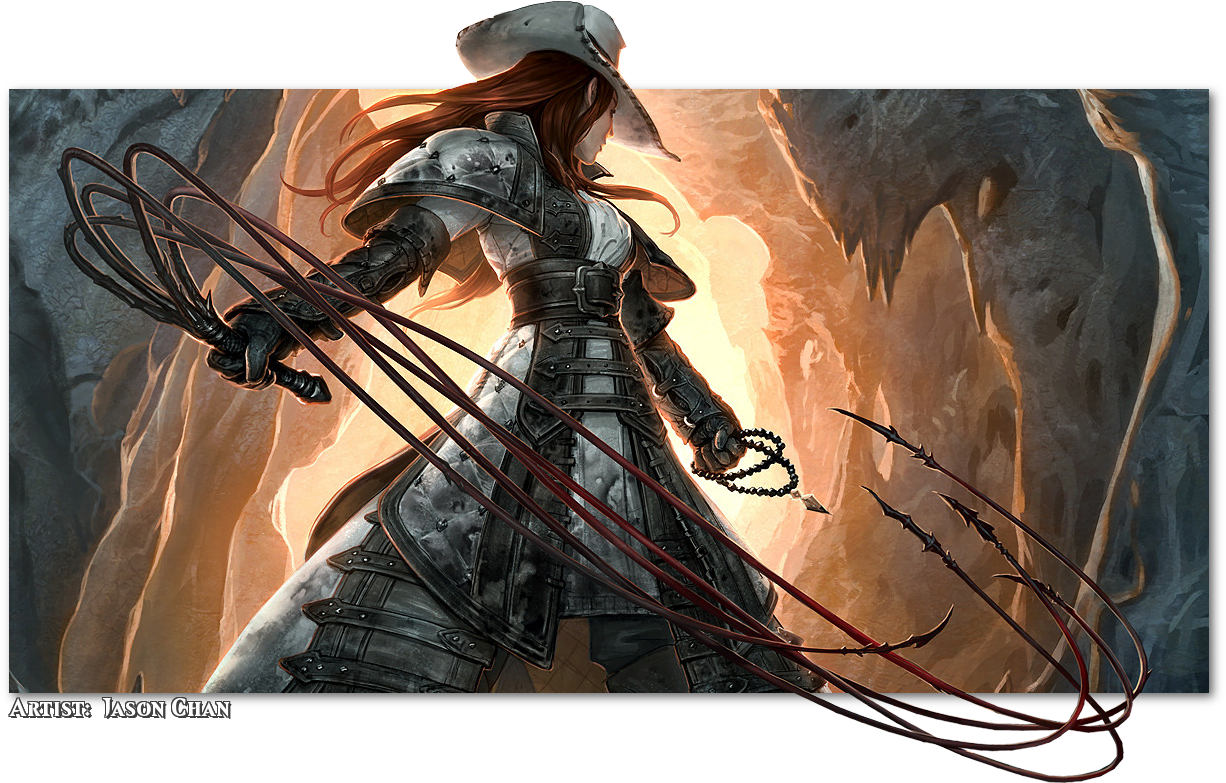
Between each hunt, the players invest effort into the thing that forms the core of their group, their Nexus, determined by the type of group they are. You can build your own keep or workshop, or network of connected hunters, depending on the type of game you choose to play.
The aim would be to keep the tactical, movement-based miniatures-driven combat of 4th Edition D&D, and giving you a sort of ‘boss rush’ way of playing. DMs don’t need to design larger dungeons, but rather just small connected places for the hunt to find their prey, and thanks to the hunters being hunters, these encounters naturally can take the shape of kill-boxes, or containment points.
Details
This would be a gamebook, first and foremost; a single book that’s designed to work with Dungeons & Dragons 4th Edition. Hypothetically, if your players are into other systems, it might be designed to handle that kind of cross-compatibility, but the basic point is to be a game system for a game I like. The game would then be made up of a series of modules that you snap together to make your campaign.
One module would be the rules for creating your Nexus. A Nexus sets some ground rules for the style of campaign you play in and also works against the ‘murderhobo’ problem that more free-moving campaigns have. A Nexus is something that roots you back to a space – things and people you can’t leave, and it’d have systems for checking on or recognising the nature of the location the Nexus is in. You’d decide at the start of the game if you want to control one of three options:
- A Keep. Your hunters are known and important, and they have to manage and marshall the resources of the town. They may rule the town, literally, and they go out and hunt to push back the boundaries of dark around the town. This is for your more basic ‘heroic fantasy’ feeling, and have a system for managing competing needs in the keep. Think of it as being an anti-dracula, or princesses defending their castle. People like princesses right.
- A Workshop. Your hunters are part of an organisation within a city, and they relate to the people who live and move in that city. They can be trusted or distrusted, liked or disliked, and the central establishment of the workshop means they can benefit from the connected resources of the city. Workshop games are more like your Bloodborne, where people might recognise that you are a hunter, not necessarily that that means they should respect you.
- A Secret. Your hunters don’t have any physical location that they centrally can meet at. They’re all people aware of a secret of the world, and that means in their city or town, they’re the ones who can understand what the monsters are here for. This is for your Buffyverse kind of hunters, though set in a more gothic horror setting. In this situation, inspecting the monsters and hunting them may be seen as foolish or dangerous. There may be no idea of ‘a hunter’ and part of the challenge of The Hunt is making sure you can gather your friends together in time.
One module would be about dealing with monsters and classifying them based on their grouping. Back in Ravenloft there was the mechanics of Fear, Horror and Madness, which kind of did a similar thing – in this case, the idea is that monsters represent types, and exposure to/interaction with a type can change how you react/treat them. This would be a space for ideas like beasthood or maybe insight from Bloodborne. If players want to contain the powers of the nightmares, this is where I’d put that kind of idea.
Another module would be for handling gear. The 4th ed weapon system is really good for things like transforming/trick weapons, or weapons that evolve naturally over time. Your Nexus might be able to replace a conventional gear system – with gear and abilities levelling up based on a budget/availability. One of the funny things with 4ed is that most gear was just meant to get replaced by level – you were never meant to plow your entire budget into a thing that you could hypothetically pay for, after all. Just making it so ‘downtime can be spent to upgrade gear’ seems an obvious way to streamline gear and reduce the quantity of knick-knacks that are a bit of a design problem.
Another module would be for ‘Races.’ Particularly, it might be useful to make a system for turning a lot of Races into Ancestries or Heritages, the idea that in this culture, what a Dwarf represents mechanically is just another type of human, and to put the races that are blatantly visually monstrous in a basket that let players play twisted, monstrous hunters. Imagine being a minotaur trying to hide in Yarnham.
Needs
Playtesting, for a start. It’s also a big project. Art for RPG books is always a thing. Fortunately, this is something I’m going to want to exist so I can run it, so that’s going to mean that even if it never gets made/polished and sold as a big project, this guide will still be useful as a reference point if I share development on this blog!
Project: Casino Worker Placement
The Pitch: It’s a wallet worker placement game, where you’re commanding a gang of The Suits inspired thieves hitting a casino, avoiding guards, and trying to have the best score at the end of the night, in a high contrast black-white-red style.

Details
First up, I wanted this game to use a small number of cards, some tokens and to fit entirely into a gamecrafter style bag. That meant trying to use a small number of cards to create a space. What I got was when I looked at cards like this, it wasn’t just nine rooms, it was also a series of hallways between them.
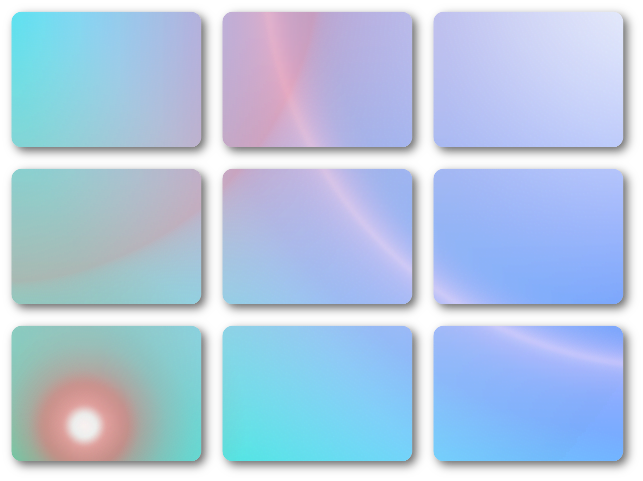
hey look maw, I’m vaporwave.
These are nine rooms, and players can move any amount, but there are guards that block hallways – and you can move them, too, with the right game action. That means that in addition to trying to put your thieves in some rooms, the guards also limit where you can be, but they also let you block your opponents’ movement or make it less convenient.
Each room has a value like a poker card, but also a type and a special rule. So there might be a room that pays out to everyone in it, or a room that pays out to the player who pays the least, or whatever. So it is a worker placement – you put in a worker, you get a thing. At the end of the game, though, your workers’ positions represents a poker hand and that determines your share of the final payout from the heist.
Needs
The biggest barrier to this is … well, stuff on gamecrafter is harder to sell at conventions. People tend not to buy my stuff on Gamecrafter, and this would want to be Gamecrafter for its tokens-and-cards style, as well as the small bag.
Think there’s a demand enough to continue on this idea?
Anatomy of Nsburg
Hey, remember me posting about my Craft-a-long project for Desert Bus 2018? I made a little card game about rearranging the inner city of the town of Nsburg, from the QWERPline podcast.
Now, I posted a bunch of this to twitter, as I was doing it, but twitter rolls past, and I wanted it to be both searchable, and I wanted to remind you this is a thing you can have. This is going to be (hopefully, as far as I know) available as a charity prize for donating to Desert Bus 2018. Here! Check it out! Get hype!
Here are some of the town cards of Nsburg so you can have a look, and a bit of a laff, and see how this game project went from Nothing to Something in as short an amount of time.
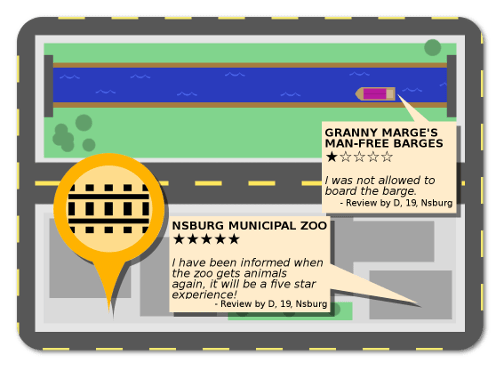
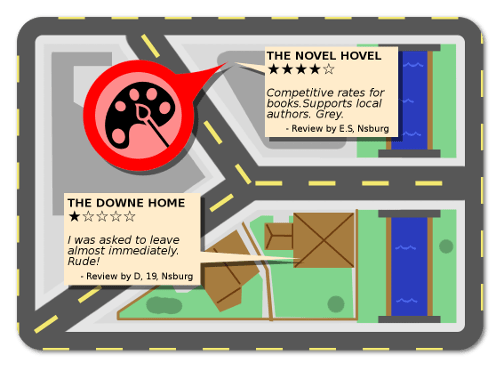
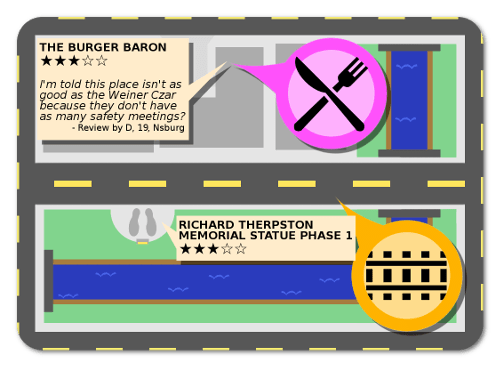
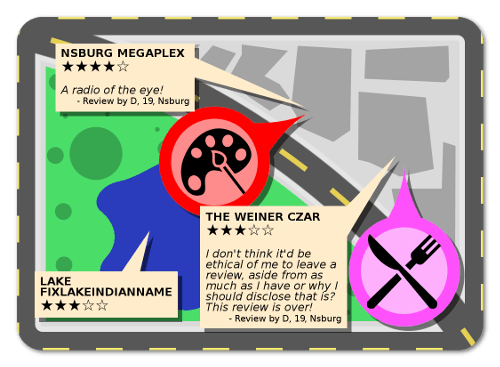
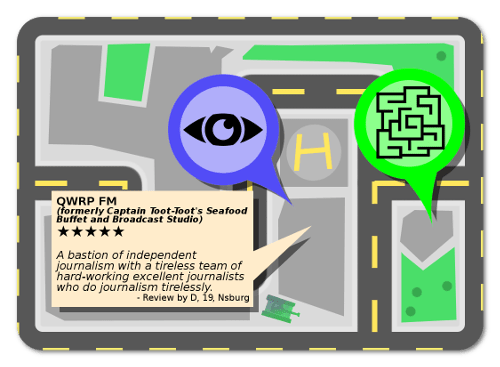
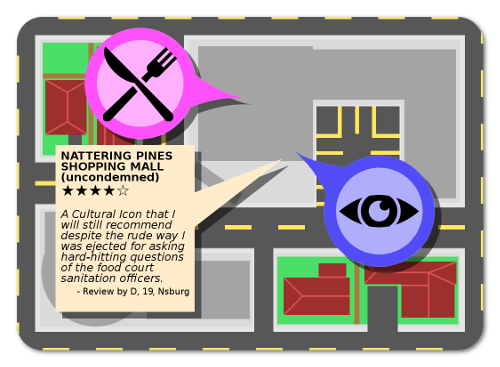
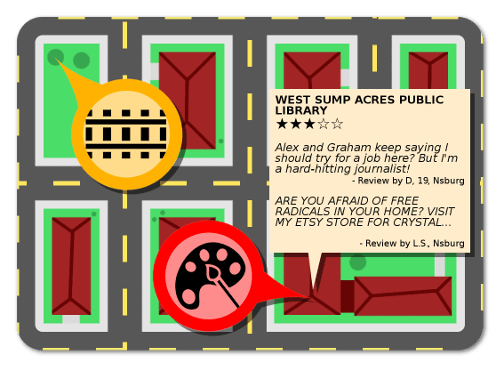
Ironically, this game was really hard to research, because Nsburg is definitively confusing. And of course, none of what this represents is canon – there’s no sign in the QWERP continuity that Lack Fixlakeindianname is its name. I still had a lot of fun doing this and sharing it with people and I hope you tune in to Desert Bus and we see how it goes!
Project: The Pipesman Conspiracy
Hey, this is kinda a cool one.
I’m working on this little game. It is, as far as I understand, never going to be for sale anywhere. It’s going to be available only as a charity option in Desert Bus. As I write this, I’m finishing up the first round of beta card faces.
The game is a secret goal, area control game about the city of Nsburg, the setting of Loading Ready Run’s QWRPline, and I’m making it so you can bid on it, and win it, for charity!
This is a really weird feeling? Like I wish I’d gotten into that space of making fan games, when people would think it was reasonable that I was making not-for-profit free games which built in spaces people liked already, like Star Wars amateur card games or the like, before I vaulted into making proper games, games with concerns like copyright and stuff, because I was selling them for money.
I mean I don’t regret it, but still. It’s nice to work with someone else’s concepts, someone else’s art. I really liked the way that the game came into being as I tried to express this idea of a slightly crap, but very funny conspiracy.
Anyway, with that in mind, here are some examples of card faces in production!

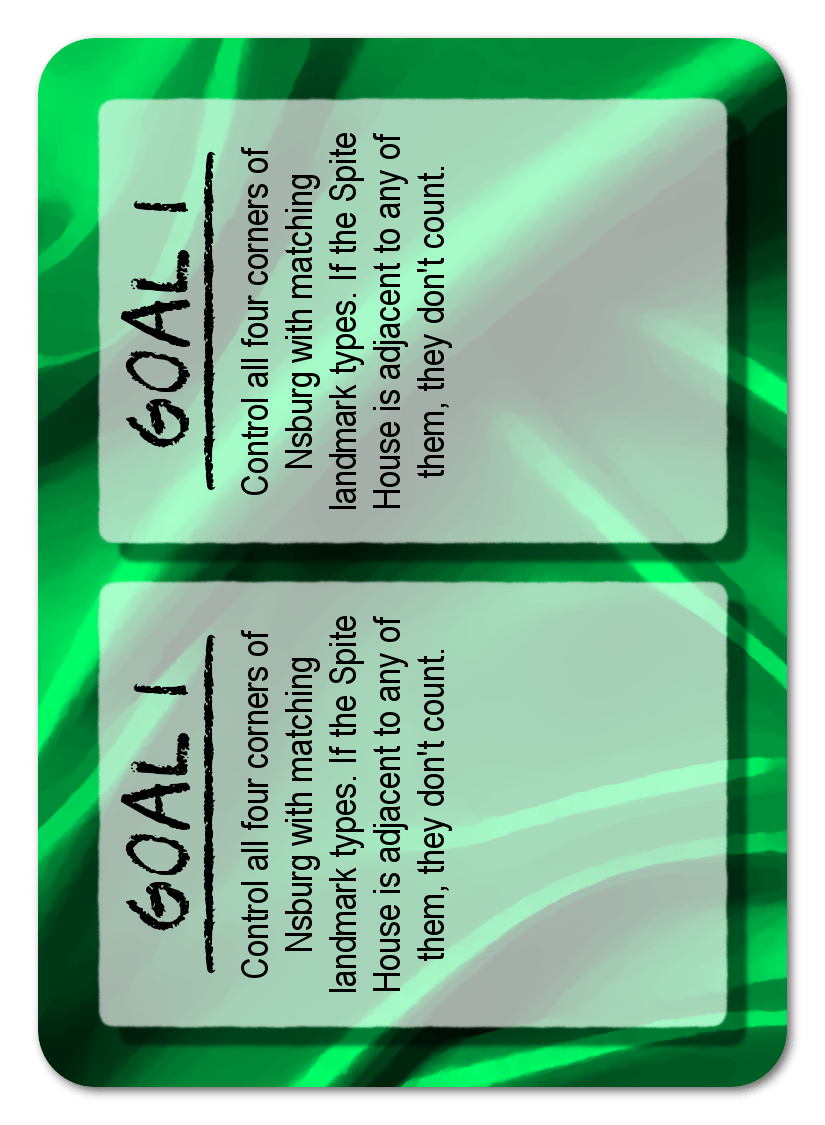
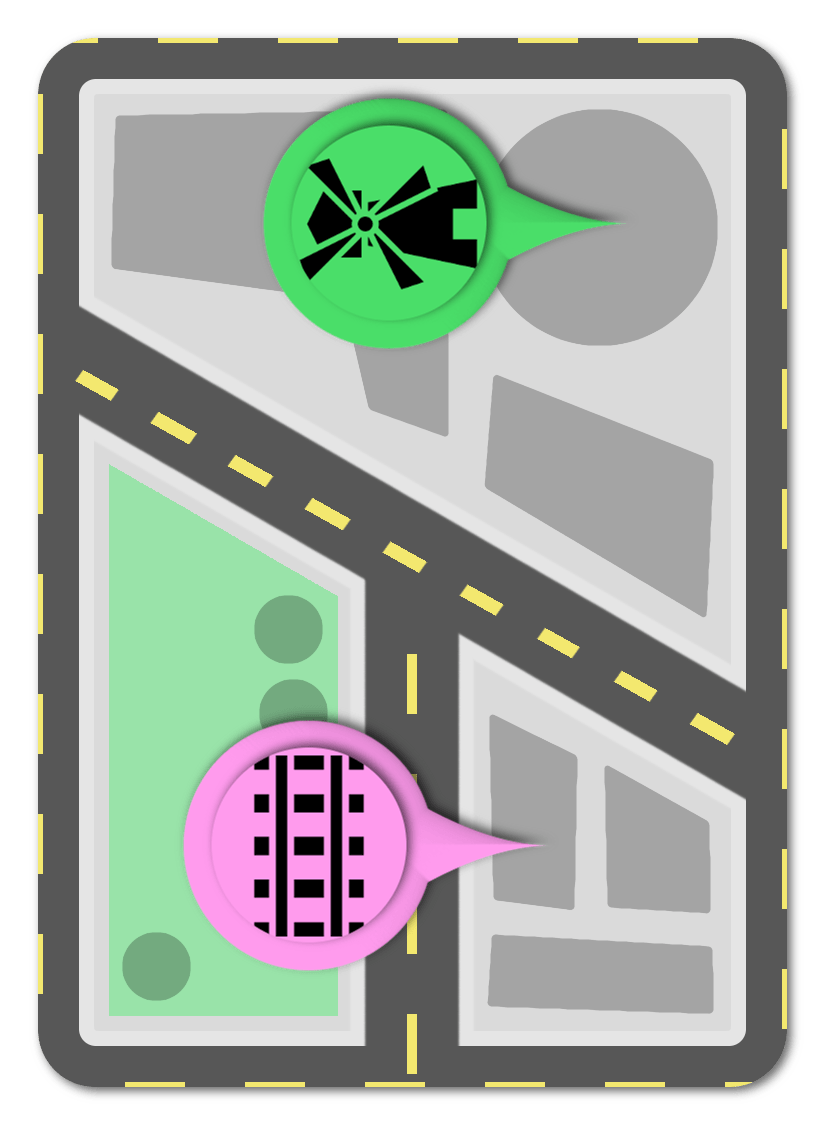
This game is almost a wallet game – the town of Nsburg can be made with as few as 16 cards, and the goals can be a few more cards on top of that, to make sure they’ve got some variety to them. You don’t want the game to be about the same end-goals every time, right?
The two goals are meant to represent two different options – one that’s kind of easy to do, if nobody is messing with you, and one that’s a lot harder to do, but much more specific. The idea is that you’re meant to be able to arrange the city of Nsburg based on your particular interpretation of the incredibly vague plan of the Pipesman.
Now, the game that remains might get stripped down a little bit and rethemed maybe a little bit to be a different game, but there is going to be at least one feature that definitely only exists in the special Nsburg version of the game.
Now, when this goes up, odds are good the game is on its way to Canada. We’ll see how this goes!
Project: Voiceless
The Pitch: It’s a hidden identity game where all the players are merfolk princesses, who have surrendered their voices to the Sea Witch. Except one of you is the Sea Witch, and in the midst of the group is a powerful charm that binds all your hexes. If it’s laid upon the Sea Witch, all the curses will be broken and everyone is free, and you each know a little about the women around you.
Except none of you can talk.
Details
Voiceless is made up of cards:
- Identity cards, of which you get dealt one at the start of the game
- The Hex card
The identity cards have an identical back. One of them represents the Sea Witch, and the remaining cards represent roles.
The most basic kind of role is just a mermaid princess. These win if the curse is broken. There’s also a Sea Witch, who wins if any of the princesses gets cursed.
Setup: Choose the princesses you want to include in each game. There should be some proportion of princesses to Sea Witch, and some princesses that complicate the game. Shuffle these princesses, deal one to each player face-down. Players can look at their card at the start of the game. Put the Hex card where everyone can reach it.
Play Loop: Players cannot talk throughout the play.
Starting with a first player, a player looks at another card on the table. They can then take the Hex card and either hand it to the next player (showing they are done), or hand it to another player face up. Players can then vote on whether or not they trust that with a thumbs-up or thumbs-down vote.
If the players all vote thumbs-up on one player, that player is Hexed, and the game ends. Cards are revealed and then players determine who won based on their role cards.
Needs
I mostly need art for this. The game at its core just needs a handful of pictures of mermaids, including at least one that can be The Sea Witch, so with a clearly different palette and style of the others. The aim would be to have the mermaids, as princesses, represent extremely different styles of personality, such as ‘mean girl’ or ‘innocent’ and I would want to make sure these mermaids didn’t represent just one vision of cool mermaidness. They wouldn’t need action shots or physical prowess or detailed weapons or whatever, just pictures of cool, Disney-Princess style mermaids.
Do you think you have the skills for this? Are you interested in the idea? Feel free to contact me, either via the Twitter DMs or by emailing me!
Project: All Of the Clams
The Pitch: It’s a small deck auction game with currency cards and a failure state. It’s a bunch of pirates or merfolk haggling over who gets what cool junk they found while trying to offload a cursed coin they’re all stuck with.
Details
All of the Clams is made up of two sets of cards:
- Treasure cards, that you bid for
- Currency cards, that you bid with
The Treasure cards are all stuff that matters to the players, so the framing device requires them to be people who want something, or have some reason to want things. I don’t want these things to have a grim tone so it probably can’t be something like post-apocalyptic medicine, or evidence for important criminal cases, so I vastly prefer for this to be motivated by greed or self-importance.
The Treasure cards come in three basic forms:
- Value cards. These just give you points for the end game.
- Negative Value cards. These take points from you for the end game, and you have to bid in reverse to avoid them.
- Box Cards. These cards come with other cards from the Treasure deck, and have some inherent value. Players can choose to leave the box closed or not, but opening the box makes the contents public.
The currency cards come in the following forms:
- 3 Coin cards
- 2 Coin cards
- 1 Coin cards
- Cursed Coin Cards
Setup: Players get identical sets of currency and it always includes 1 cursed coin. They have fewer 3-coin cards than 1-value cards. Probably a sort of 3-2-1 distribution, but make it so that it’s possible to overwhelm 3-value cards with 1-value cards (so 3:1 ratio). Then, remove a treasure card (or more) from the top of the deck, hidden.
Play Loop: Each round, the top card of the treasure deck is revealed. If it’s a box card, put the proper number of cards in that box. Then, players bid in a round on the treasure, not a value but a number of coins. Players can withdraw their bids and drop out of the bidding at any time, reclaiming all their coins. When all players are done putting cards into the centre, all the cards are flipped over, and the bids are compared.
The player who bid the highest value gets the item and the other players get their cards back. Note: Any player who revealed a cursed coin in this phase has to leave it revealed for any future bids. These coins are then taken from the player and lost.
If there’s a Negative value card, the same thing happens in reverse: Players coins in hope of not getting the coin. If one player withdraws or passes, they can keep their money, but have to take the Negative value card.
If one player has run out of coins, the other player can then claim a number of face-down treasures from the top of the deck equal to their remaining coins. These face-down treasures are worth only 1 scoring unit.
The winner of the game is:
- The player with the most victory points who has no cursed coin, or
- If all players have their cursed coins, the player with the most victory points
Needs
I mostly need art for this. There are three major concepts for the game at the moment – mermaids vying for human junk, pirates distributing treasure from a raid, or cyberpunks swapping chunks of code and virus-infected bitcoins.
Do you think you have the skills for this? Are you interested in the idea? Feel free to contact me, either via the Twitter DMs or by emailing me!
What’s Nyarr?
Hey, what have I been up to these past few days? Well, I was writing up the Nyarr.
What’s a Nyarr?
The Nyarr are going to be this June’s tabletop release. They’re not going to be a card game – they’re a new ancestry for your tabletop RPGs, released as my Lost Libram line of content. Lost Libram is my division of my work that’s from my older D&D work, stuff I never released because hey, 4ed came out and my friends are playing that now.
As a designer, I still love this old content, and realising there’s a market for it, I decided I wanted to get it out there. Especially since a lot of writing of this type isn’t mechanical, it’s conceptual, it’s giving flavour and tone for the stuff I’m sharing. RPG writing is in a lot of ways bits that you playtest.
Here’s an excerpt:
Nyarr are humanoids comparable in size to humans, ranging between 150 cm (5 feet) and 195 cm (6-½ feet) tall. Despite their size though they are markedly heavier than humans, ranging from 72 kg (160 lbs) to 118 kg (260 lbs). Nyarr have skin hues that range from a dark brown to a pale green, and some Nyarr are coloured blue or purple. Nyarr have soft plates of chitin on their skin on their shoulders and knees, and their feet are split into two large forks, rather than five small toes. In silhouette, Nyarr are most like humans, though with larger feet and hands.
Nyarr are most easily distinguished from humans by a number of secondary traits; Nyarr have scaled hands with pronounced, thick fingernails that look like claws, scaly plates on their shoulders, horns – typically two, though rarely four, – long, thin tails, sometimes splitting with feet that stretch up into a ‘high’ stance for running. A Nyarr running tends to lean forward a great deal. These traits have been called ‘demonic’ and ‘monstrous’ commonly, though their actual threat is quite minor; the scales protect their hands for fine manipulation in extreme environments, and the horns and tail allow them to steer while running more readily in areas like cliffsides or desert plains.
Nyarr gender differentiation is complex to explain, as Nyarr have at least three major genders. Their words for each gender are translated as generally ‘male’, ‘female’ and ‘onyar’. Physical differences between the genders are hard to determine; roughly half of Nyarr have a shape regarded by some students as ‘feminine’, but commonly-recognised indicators like hips and breasts are not common to the genders. While female Nyarr tend to have shapes other cultures regard as ‘feminine’, and male Nyarr tend to have shapes regarded as ‘masculine,’ these are not hard rules at all. Onyar Nyarr vary the most, with some onyar having prominently powerful arms and legs, with a more petite body trunk. Some Nyarr tribes even send out explorers to learn from other Nyarr other genders, trying to find the best ideas for their people to choose.
The Nyarr then, are a deliberately enby inclusive race of cool monster people for Dungeons and Dragons 3.5, who are powerfully social, deliberately cooperative, and inclined towards trying to make friends, even as they are careful about trusting the rest of the world for being hazardous to their culture at large. Visually they’re kind of like big-footed and big-handed Tieflings, and they have culturally, an idea of ‘choosing’ genders from their three major genders, with the understanding that some Nyarr choose other genders if they’ve heard of them.
One detail here, and which I’m putting out there to put on the record even if I fumble how I say it: I am recruiting non-cis artists and writers to contribute small bits to the text of this. My thinking on this is pretty simple: The Nyarr represent a way for a game player, someone who isn’t necessarily heavily connected to the world of nonbinary genders, to be introduced to them, and, as a creature in a game, it gives people a chance to play with, and come to understand that idea. If I’m going to put that kind of thing out there for people to include in their game, I’d want to make sure that people with experiences like the Nyarr interacting with other cultures, are able to put their mark on the work.
Complicating almost all relationships Nyarr have with other cultures is the expansionist trends of almost every non-Nyarr culture. Nyarr have a phrase that translates roughly as Be Wary Of Those People. In the past, Dwarves have hollowed out mountains that Nyarr considered home, collapsing the landscape underneath them. Humans have cleared forests they considered home and turned them to furniture and machinery. Elves have magically tamed jungles and ousted Nyarr from the trees they considered home, in the name of making them more like their own forests. Nyarr tend to view all these cultures as invasive.
Humans and dwarves are very much cultures that judge and compete, and view survival as a personal thing. Nyarr culture rejects these ideas, and sees survival as being a shared responsibility. Also the humourlessness and lack of fun in Dwarf culture is abhorrent to Nyarr outlooks – to survive without an ability to feel joy is to be as good as dead. Dwarves can sometimes appreciate Nyarr because of their survival abilities, while others see Nyarr and their culture of change and cooperation as weak and strange.
The cultures less prone to building empires and starting wars tend to cooperate with Nyarr better – particularly orcs, who rarely want territory that Nyarr alone can hold. Nyarr feel a kinship with the half-humans like the Half-Elf and Half-Orc, seeing them as something a bit like themselves; outsiders in a group.
It’s a little ostentatious, I guess, but I want to be careful about the ethics of it. I don’t want to stomp into gaming with Here Is A Trans Metaphor For You, As Expressed By Me, A Cis.
If you’re at all interested in this, if you’d like to give the Nyarr a read before their release, let me know. I don’t pretend to be an expert, and I can’t really afford a proper high-grade sensitivity reader, but if you’re curious, let me know.
Cities And Towns
Let’s talk about a game idea, and what I want to be sure I’m saying with it.
This game idea is known tenatively as cities and towns. It actually started as a colour matching/multiplier game, a math game for my nephews but I liked the metaphor of it being about things rather than stuff, and so it slowly took its shape as a town builder.
The notional mechanic is that there’s a common pool of cards, the city, that determine the value of the cards in each player’s personal pool, their town. At the start of the game, you deal each player a starting card that’s not worth anything, but gives you a place to start from, and put three cards into the city, to give people a standard view of how things are valued. This means that putting cards into the city can represent an explosion of value for you, but it’s something other players can piggyback on – if you have two of type A, and there are two more A in the city, you get four points, but any player who builds an A gets two, too.
I like this mechanic for representing things like trade dependencies and culture growth. A university on its own isn’t worth as much as a university surrounded by other smaller towns with universities, and a market thrives when there are other, connected markets. Players are simultaneously building the scoring mechanism for the game as they are building their own little spaces in the game.
Then came the time to make the game pieces, and I hit an interesting conundrum. See, one thing I could do is go with a pastoral, adventure-game vibe, you know, the not-necessarily-fantasy, but-probably of kingdoms with farms and quarries and woodcutters, as you see in games like Settlers or whatever.
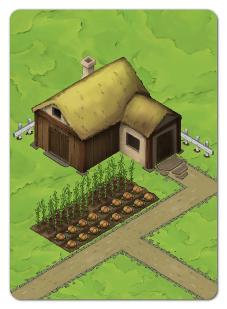 The next option, however, is to build assets using something like these Kenney assets, isometric city representation.
The next option, however, is to build assets using something like these Kenney assets, isometric city representation.
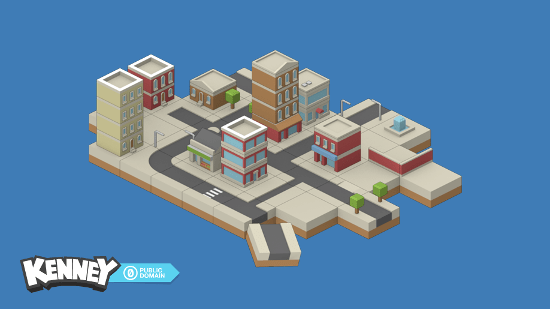
Now this choice opens up an interesting question. I think that a modern urban city and smaller town thing presents an interesting set of different mechanics – after all, you have faster communication, and maybe there are some buildings that can’t go anywhere but in the city, and some things that can’t go anywhere but the town, because of infrastructural needs. Is there a need for variety the same way in buildings when they look modern, when they could show similar buildings on different blocks with ‘zoning’ rules?
But then we hit an additional question: What about redlining? What about the history of deprivation? If these are buildings that look like cities, but outside of cities and minus the skyscrapers, am I just building suburbs? And if I am, do I really want to present a scenario to players where they want to build more schools in the city, because it makes their schools out in the suburbs more desireable?
Now, I’ve made my decision – the game’s underway. But these are decisions you gotta be prepared to consider and confront. When you make a game, you are responsible for the things you choose to put into it, and the assumptions you make about what the game should have in it.
Spending and Earning Patreon Money
This is meant to be kind of a state-of-the-blog as pertains to how I’m using your Patreon money to make content and how and what it’s being used for.
Print and Play: Adventure Town, Pt 2
Time for more thinking on our print-and-play game tenatively titled Adventure Town. What I know I have is a game loop. I know what I want the play experience to be for the players.
One player rolls a handful of dice, and the dice are drafted; players convert those dice into currency, either by a direct conversion or using a detail on their board, showing which dice they took and what they used them for. Then, players can spend coin on their turn to build things in the town.
With this simple game loop, we define some boundaries of the game. Let’s go over them in terms of wants:
I want a key player to roll some dice, then I want the dice drafted; the player who rolled them gets the biggest share, then the next player gets fewer, then hopefully the next player gets fewer and fewer and so on. I want this number of dice to be large enough that it’s hard to ‘hate’ draft – if you’re passing five dice, you can’t really rely on taking away the one die someone two seats away might want.
I want players to care about what happens when the dice are rolled, but not stress too much about what other players are doing except in a general sense. I want people to care less about individual short-term actions, and more about what they see their opponents trying to do.
I want players to feel like they’re in charge of something. I see them as representing a group, but also making changes to the town as the game goes on. This could make them big and wealthy landowners, but if they were, why would they be hanging around in podunk nowhere? Seems better to have players represent groups – maybe family businesses, investors, workers, cults and guilds.
I want players to have their own play space, and I want them to have a common board space. I can use the common space to track things that people do to affect everyone – in this case, I want them to play and deal with the idea of the town space to see players marking territory and claiming ground. I don’t want the town board to lock options off from players, though – so I don’t want buildings to be only usable by the people who build on them.
I want the building of a building to be a little bit of an event. I want players to recognise that they’re doing something that’s kind of cool, and maybe get to mark it, or sign it.
I want the game board to change. I don’t want to remove buildings that are already in place, though, because that seems to represent a traumatic destruction of the board. Also, players are mostly interacting with the board with pens or pencils, which don’t show destruction as easily as they do creation. Even a big ole x through a square can be missed by comparison.
I want there to be some feeling of procession through time. So with the desire for board change as well, I think I want to create the feeling people are moving through the town.
With these wants in mind, here’s an example of the ‘town’ board I have in mind.
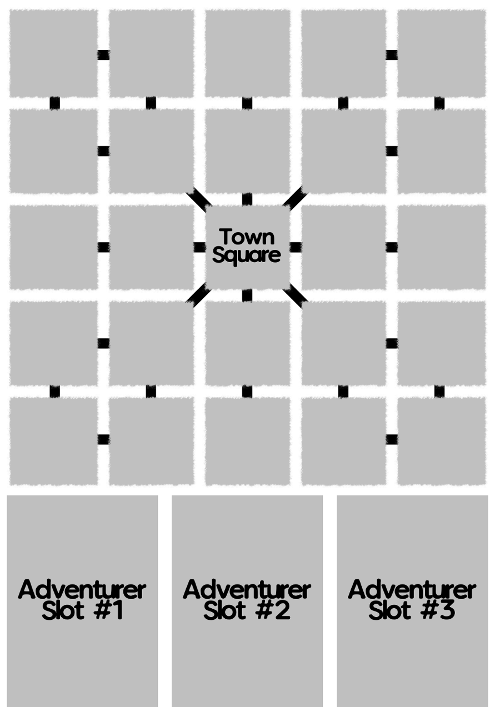
This design means that each turn, from the deck of adventurers, three adventurers arrive, and they trigger things in town. This means each turn cycle has players doing things, building an investment in the town, and then adventurers turn up, and the town does things based on those investments. This could, if I do it right, play out a bit like Machi Koro, except instead of rolled dice, it’s a sequence of adventurers.
Problems with this board off the top of my head:
This might wind up being too tight! I might decide to make the town squares bigger, and not include a space on this board for those cards. I may not need 3 slots, or I may need more than 3 slots. After all, they don’t need to be on the board, and the deck won’t have room to live on the board.
- The town squares might be too small at a glance.
- The town squares don’t have to be squares. They could be rectangles, fill out this space in
- I might have too many town squares. I might want to make it a 9×9 or 4×4 grid, or maybe get a little odder, with some buildings occupying multiple squares, perhaps signifying their importance.
- I might not want there to be a tree relation between spaces. As it is, I put in the lines to give myself a vague idea of what I was doing, but it’s by no means essential.
Here’s another example while I’m at it: 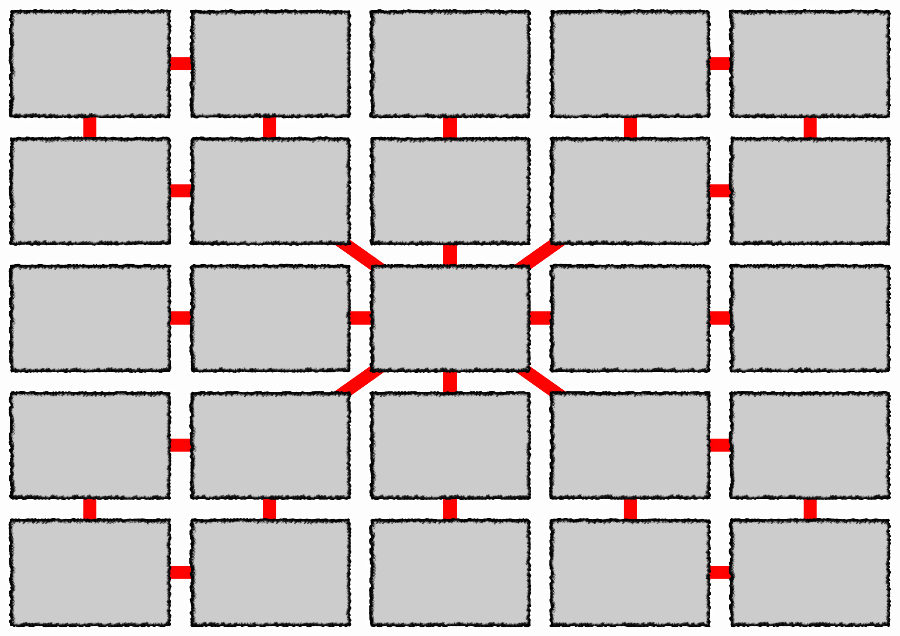
Project: Strange Days
The Pitch: It’s an asymmetrical multiplayer game where one player is an evil entity organising a plan while the other players are low-tech hackers trying to avert the end of the world.
Details
This is one of the more elaborate board-card games, where you get a fairly large number of cards in a number of sets:
- Player cards, indicating what the players can do
- Player action cards, indicating a loadout of skills each individual player can have
- Scar cards, which are status effects that can be imposed on the players
- The threat deck, which is full of cards that build out and form the encounter players deal with
- Resource cards, indicating things you earn for success
- The threat identity cards, which when revealed give the threat some sort of drawback or weakness
In this game, there are a handful of deck sets; the monster has a deck of cards they get to rearrange every turn to construct a type of challenge they want people to fight through. There’s a deck of cards, known as Scar cards that represent the way players are affected by the experiences of being a hunter of this terrible force.
The game has a very VHS Fuzz Aesthetic:
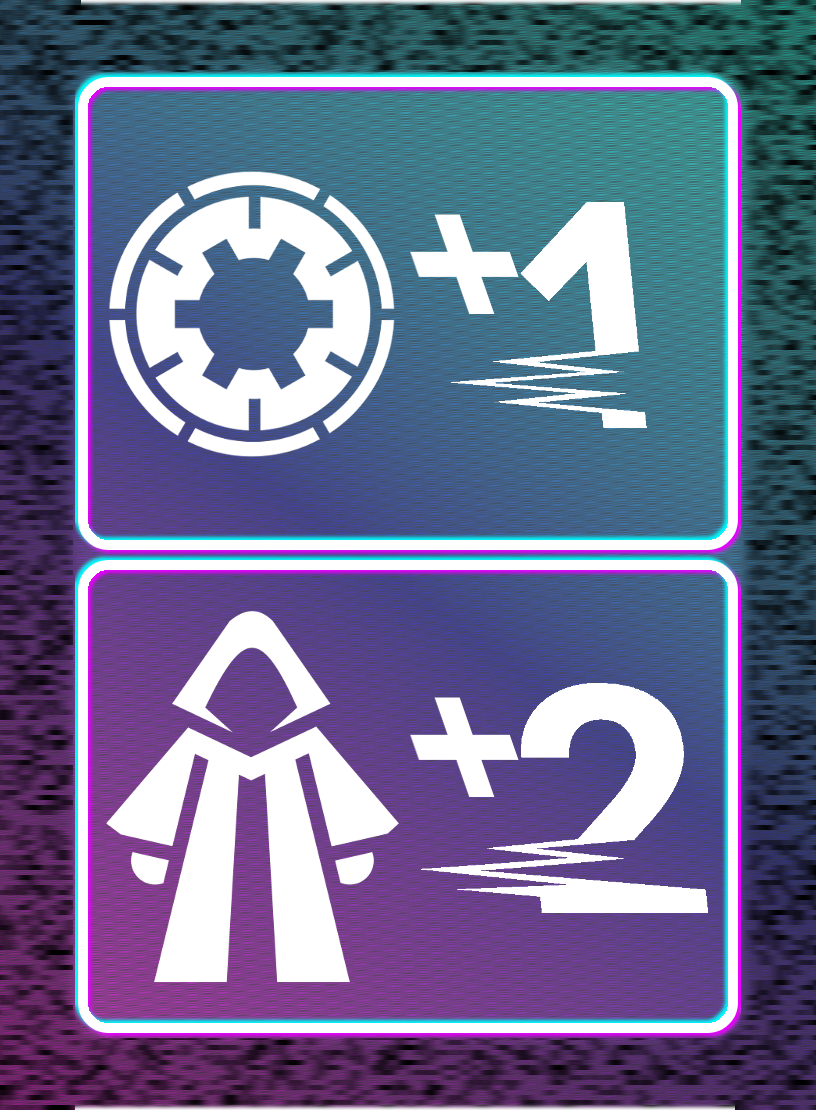
This is an example of a Threat card face, showing a card that gives you 2 cultists and 1 reinforcement. Players need to bust through reinforcements, while cultists are swarming them.
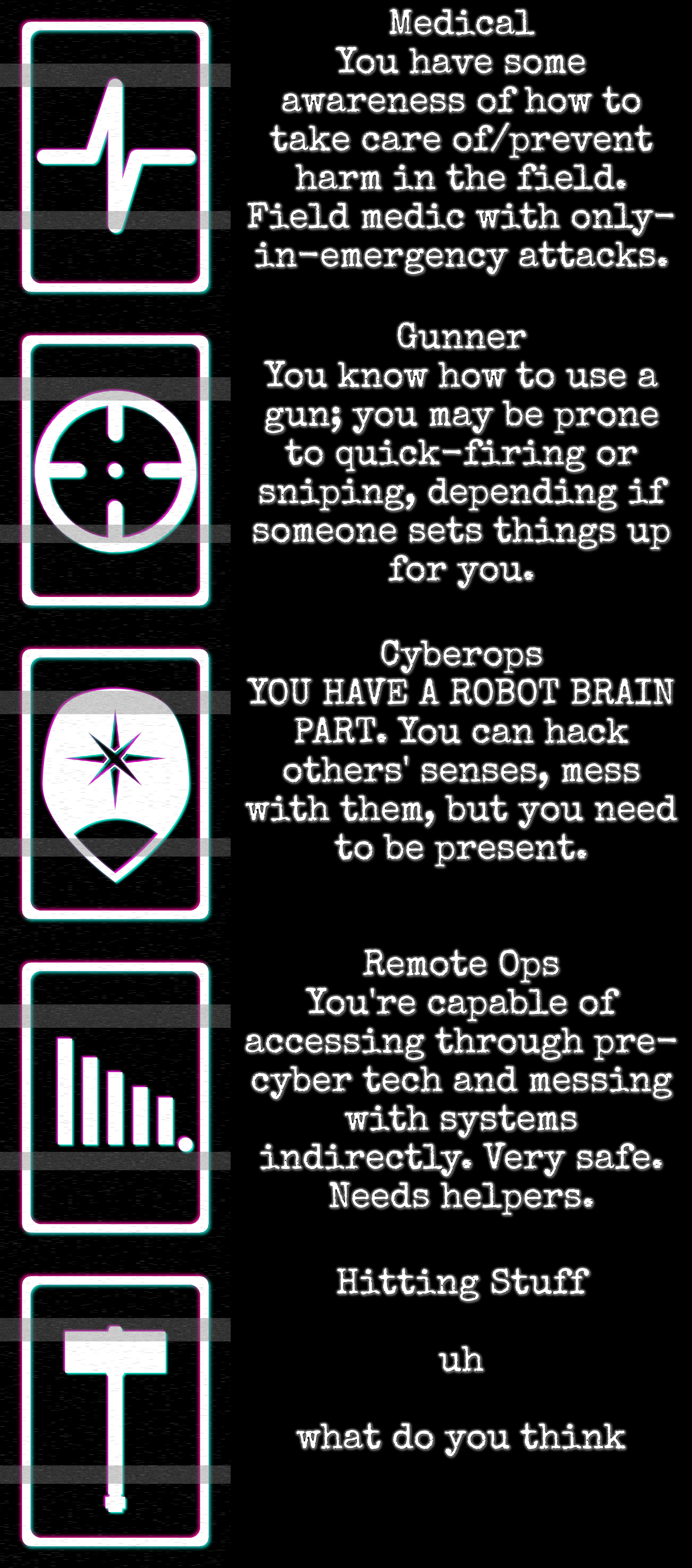
This is an identity set showing what the player action cards are like.
Needs
Interest! Right now while I like Strange Days, it’s an idea that’s overlapping elements of horror and cyberpunk, it’s also a game that needs tokens and cards, which means it’s going to live, like Skulk on Gamecrafter – a format I haven’t yet tested and proven as a possible avenue for selling games. Basically, this game is interesting to work on but I’d need to know people cared a lot more than I know they do.
Also, I cannot currently afford to actively comission this game project! I do not know if my state of money will change or how your relationship to the potential payment would work out! Do you think you have the skills for this? Are you interested in the idea? Feel free to contact me, either via the Twitter DMs or by emailing me!
Project: Bunny Field!
The Pitch: It’s a build-out game like our game C-QNS, but instead of abstract numbers and shapes, you’re building a meadow of lovely flowers.
Details
Each player is drawing cards off a single deck of cards to add to their own hand of cards. Then, each turn you can place a card in the grid around the deck that represent the growing spread of flowers in the field. Each card sets rules about what cards can be placed around it – flowers grow in patches that decrease and increase in density.
You’ll also have cards in the mix that let you flip cards face down, or layer cards atop others, with cards like bees (that help flip cards face up) or butterflies (that improve the value of cards they’re atop) or bunnies (that flip cards face down).
Cards would be mostly, representing a simple standard back of a grassy meadow, with the other face showing flowers in a number, with some mechanical signifiers. Cards would not explain what they do on them, so as to make the art very prominent.
The game would not need to be particularly large, and probably only about 52-70 cards, with a single deck that grows outwards. Players might start with a card that indicates the type of flower they want to play, or their last card in hand might indicate the flower type they score off.
Needs
Right now I have no art to start with with this idea. This project needs a fairly holistic artistic vision of showing a location and things in that location; it needs images of flowers, of bees, of butterflies, and of a nice, pastoral background as well.
Also, I cannot currently afford to actively comission this game project! I do not know if my state of money will change or how your relationship to the potential payment would work out! Do you think you have the skills for this? Are you interested in the idea? Feel free to contact me, either via the Twitter DMs or by emailing me!
Project: Asylum Jam 2017 Game!
The Pitch: It’s a drafting game where you’re all trapped in nightmares rent by guilt, and only one of you can escape into wakefulness. Or maybe you’r assembling a demonic rune so you can consume the souls of the other players. Or maybe you’re making deals in a demonic market. Or maybe you’re escaping a slasher movie villain.
Details
The game is played in an open rochester draft from a grid of 3×3 cards. Players each on their turn get to draw a card from each stack.
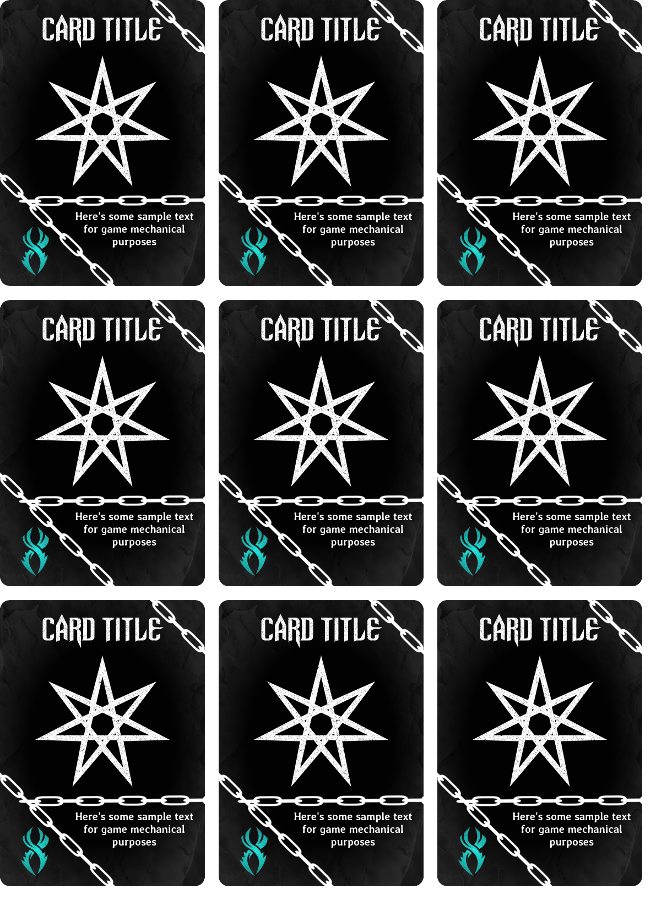
By default these cards have a face that represents some sort of virtue or ability you have for yourself. The cards have a visual element on them to make them easily sorted from one another, and each card has room for a basic symbol that sets them apart from their others, allowing them to collect into sets or protect one another. These cards are cards that make up the bulk of what you want to do, and they are also your personal resolution and protection as the trauma of the night shakes each player.
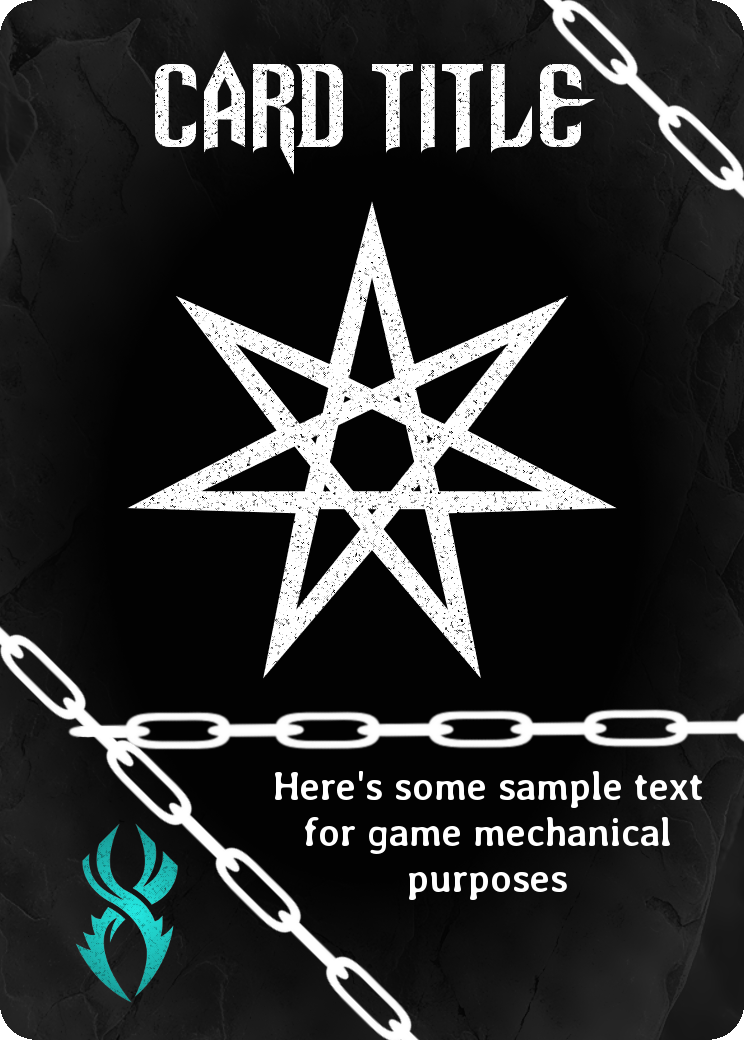
At the start of the game these stacks are seeded so that each stack features a single marked red gem card. These gem cards represent the game ending: Each time such a card is revealed, you take it off the stack immediately, and secretly flip it over, shuffle it into one of the other stacks, and then reveal the card beneath it.
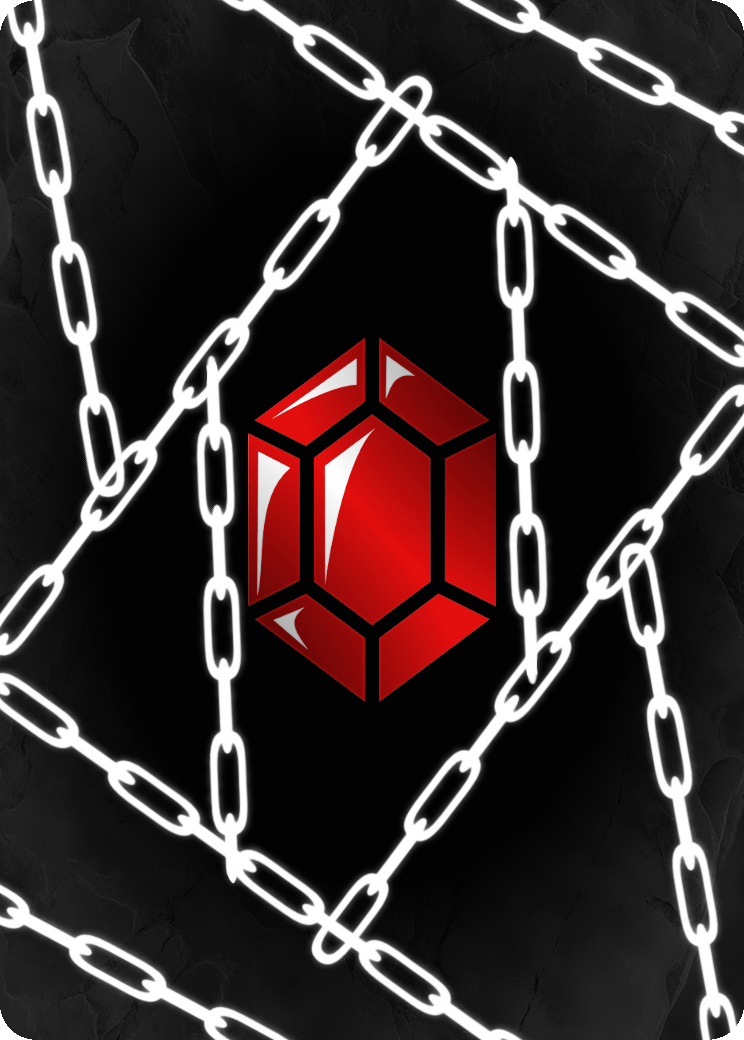
Face-up ruby cards (and let’s face it this asset will change) when revealed by taking a new card inflict a penalty on the player who takes them, and when a certain number of these cards are revealed, doom has grown too great, and the players are suffocated in the darkness. Only one player has a chance to escape this – and it depends on what they’ve drafted up to that point.
So play is about building a defensive bulwark, a way to protect yourself, and trying to lay landmines for your opponents.
Needs
Well if this idea only goes up until the end of Sunday Night (the 48th hour of the time I assigned to work on this), we’ll have to see how close we get to it. I’m still not sold on the theme either: I want this game to be a one-deck wonder and I don’t want to play with horror themes, but if it’s about escaping/surviving a slasher movie monster, isn’t that preying on fears of mental health as well? Is any horror trope borne out of mental health concerns when they come from someone who’s the survivor of mental and emotional abuse? Can I write a horror that is not tainted by the horror in my own mind?
There’s also some choices for aesthetics. We’ll have to see.
Anyway, if you want to play this game, or have ideas for aesthetics or ways to add to this game, let me know! Feel free to contact me, either via the Twitter DMs or by emailing me!
Project: Wrestling VHS Game
The Pitch: It’s a roll-and-write VHS game where you’re trying to get last-minute preparation ready for a big wrestling match. While you’re doing this, though, there’s a prima donna wrestler favoured by the company who randomly interrupts you to make your life difficult!
Details
The genre for this game, VHS Board Games is something you might recognise as modelled on Nightmare, the Video Board Game. To play these, you sat down and played a movie and tried to play a board game as you did it. The video would interrupt the play with occasional tasks that made your life harder, slowed you down or wasted everyone’s time, but could also award you bonuses.
In this game, the video provides interjections not from a gatekeeper or anything, but from an INCREDIBLY well-financed prima donna wrestler who, for this event at least, has WAY TOO MUCH CLOUT. They can BOX YOU INCONTRACTUALLY or THROW YOU OUT OF A BOOKING MEETING or want you to PRACTICE A PROMO WITH THEM and you HAVE TO DO WHAT THEY SAY!
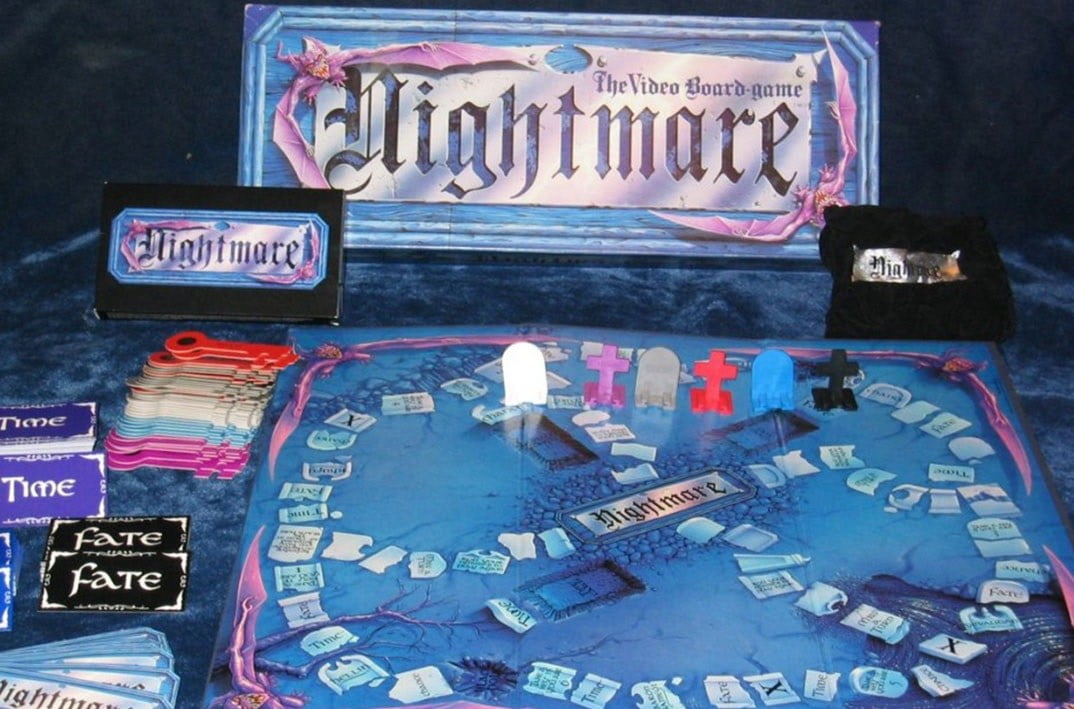
We have a means to get this video to people digitally; we can just put the videos on Youtube. We have means to get them made, casually – any webcam fan who wants to cut a bunch of wrestle promos can do it with an even vaguely appropriate background. We can make it then, so the whole game distributes online, and you can just change the game by using a different video to set a different tone. Each wrestler can introduce their own mechanics – dice-rolling mechanics, inflicting penalties on people, making fast choices and so on. We can even make the components print-and-play!
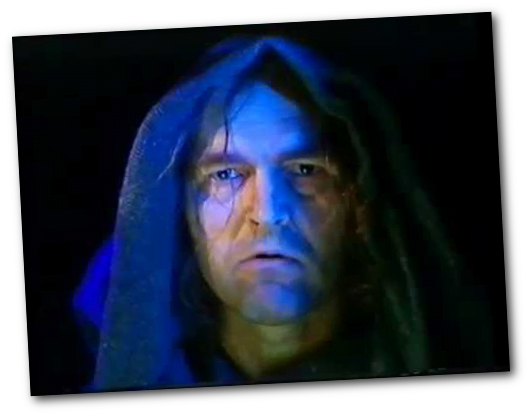
Needs
We’re now looking for people who can be The Prima Donna, or who are interested in recording 10ish (??) minutes of video of themselves as a wrestler mugging for the camera, cutting the silliest promos and setting ridiculous, arbitrary rules while everyone else is trying to finish a roll-and-write game. We have an actual example of a roll-and-write sheet for the players who want an idea of how the game’ll work!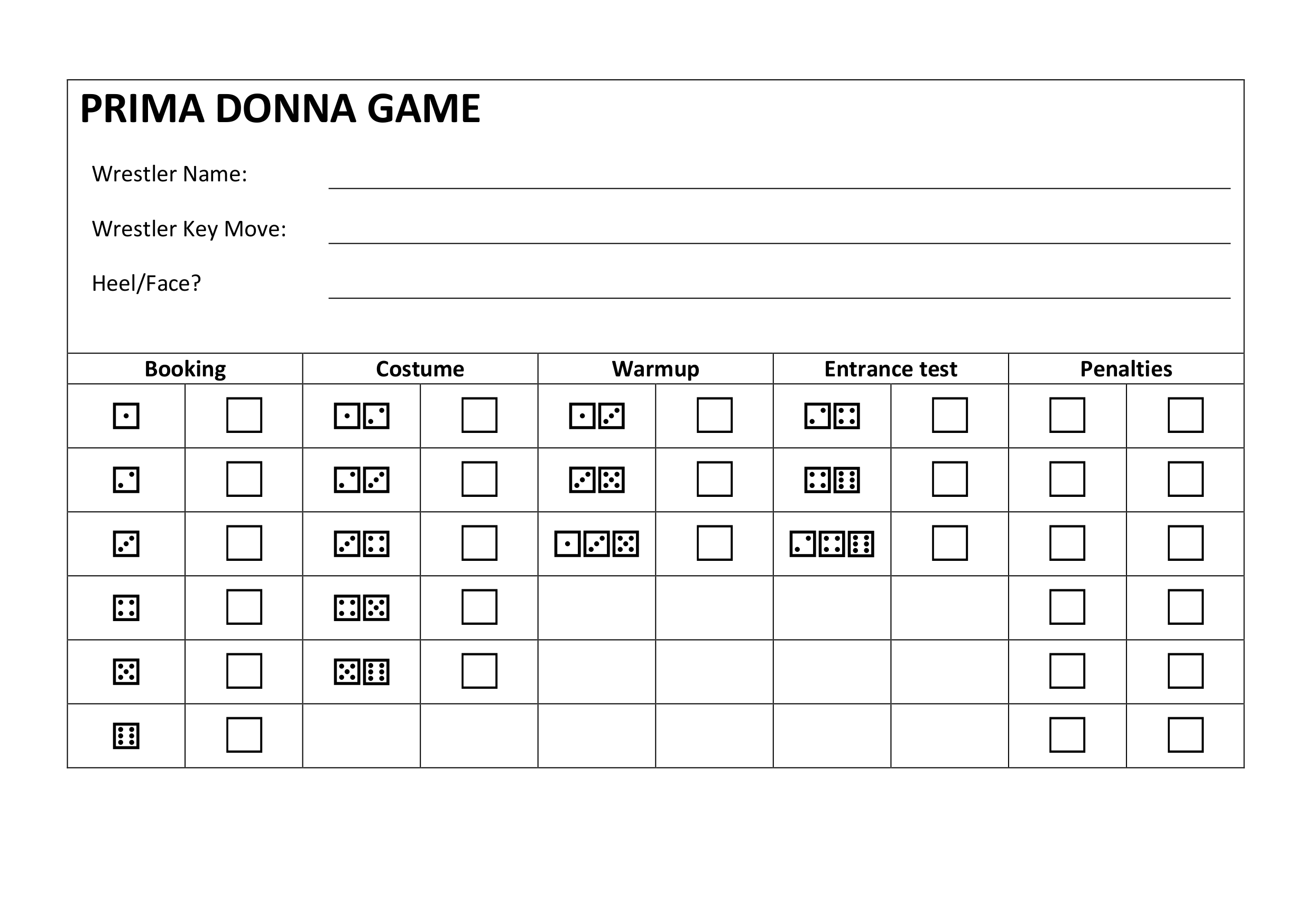 So, if you want to be a goofy wrestlersperson…? Maybe get in contact? At the moment this project makes Zero Dollars and probably only ever will… but if you’ve ever wanted an excuse to cut wrestling promos and roleplay being a total butthead to randoms, well… it’s an opportunity!
So, if you want to be a goofy wrestlersperson…? Maybe get in contact? At the moment this project makes Zero Dollars and probably only ever will… but if you’ve ever wanted an excuse to cut wrestling promos and roleplay being a total butthead to randoms, well… it’s an opportunity!
Also, I cannot currently afford to actively comission this game project! I do not know if my state of money will change or how your relationship to the potential payment would work out! Do you think you have the skills for this? Are you interested in the idea? Feel free to contact me, either via the Twitter DMs or by emailing me!
Project: Spook Street!
The Pitch: It’s a tiny deck-builder game about playing cute monster girls trying to decide if they want to spook houses or be cute at them.
Details
Every player starts with a small deck of cards, 4-5 large, which show your monster girl character making a variety of faces in her costume. There’s a grid of cards representing a neighbourhood, showing a door, and flipped over they show a number of candy cards to be distributed amongst the trick-or-treaters.
There’s a _plan file available for this, that you can read here.
The aim for this game is around 70 cards and a tuck box. Also, if it was being produced with a fast artist in the united states, it might be available to launch on Halloween (pfft, good luck for that). If not for this Halloween, maybe a future Halloween?
Needs
While I have a vision in mind for this game, with icons of a small group of monster girls pulling various cute or silly faces, I don’t have any art assets, and the variety involved would require a fairly coherent artist.While it’s one thing to want a bunch of face icons of cute girls pulling faces and having happy fun, it’s a lot of art assets, and not as simple as commissioning art of a character that can be reused.
Also, I cannot currently afford to actively commission this game project! I do not know if my state of money will change or how your relationship to the potential payment would work out! Do you think you have the skills for this? Are you interested in the idea? Feel free to contact me, either via the Twitter DMs or by emailing me!